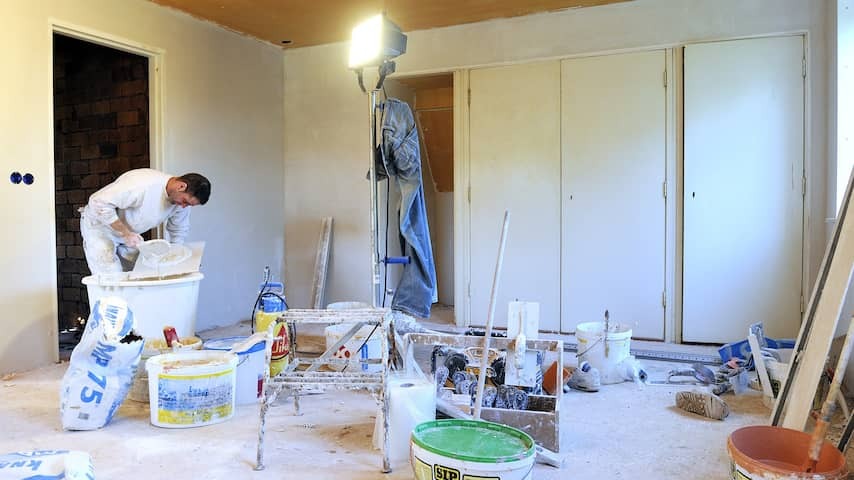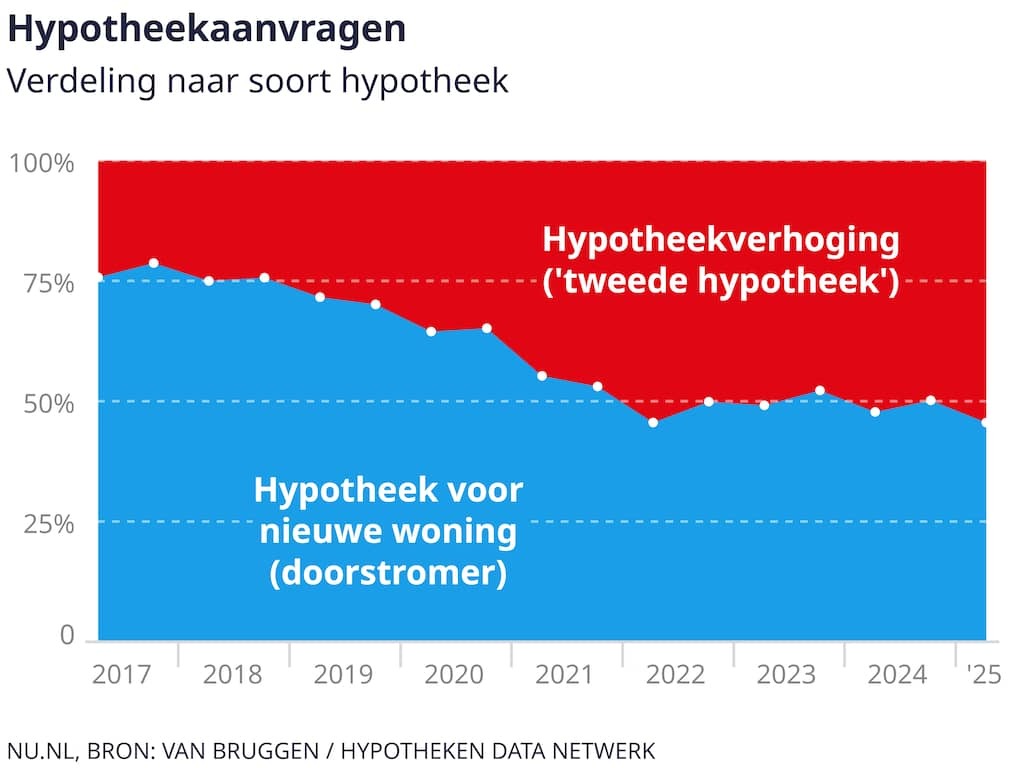
Homeowners are increasingly choosing to renovate instead of moving. This is especially true for seniors, according to mortgage applications. Given the situation in the housing market, this is logical, but it hinders the flow. “Putting yourself on the housing market these days is very stressful.”
More than half of the mortgage applications from homeowners in the first half of 2025 were for a mortgage increase, according to an analysis by Van Bruggen. “The highest percentage ever,” concludes the financial service provider based on figures from the Hypotheken Data Netwerk.

“Especially before 2022, you saw that many people still decided to move to a more expensive home,” says Oscar Noorlag, mortgage expert at Van Bruggen. In 2019, three-quarters of mortgage applications from homeowners were still for a move. “They did that because they could easily get out of a mortgage with a higher interest rate.”
The main reasons for the shift are the increased mortgage interest rates and the limited supply of suitable homes. This makes renovating more attractive than moving. “We see that people who decide to go for a second mortgage have a lower combined income than people who move,” says Noorlag. “Renovating is the cheaper option.”
A renovation has important advantages. For example, people can continue to live in the same neighborhood and their children can continue to go to the same school. Understandable, says Noorlag, but it does something to the housing market. “If people renovate, their home becomes more valuable, which makes the less expensive part of the market smaller. That makes the flow more difficult.”
“What you actually want to see for flow is that an expensive home is sold to someone whose own home becomes available again. Renovations do not create a train of home sales.”
Staying in the same neighborhood
Especially people aged sixty and over are reluctant to move because they cannot find suitable homes, Van Bruggen notes. Here, too, the fact that a renovation, such as making a home suitable for life, ensures that they can continue to live in the same neighborhood.
“But we think that there is far too little attention for seniors in the cabinet’s housing policy,” says Noorlag. “People focus on affordable homes, but much less on suitable senior homes, while the aging population will continue much more in the coming two decades. You have to ensure that the supply of senior homes becomes much larger. Otherwise, those people will remain in their single-family homes.”
The average amount borrowed for a second mortgage has increased sharply in the past four years, from 75,000 euros to 90,000 euros. In particular, inflation ensured that renovations became a lot more expensive. In addition to renovations, homeowners also take out a second mortgage for a donation or a family mortgage, so that they can help their child with a first owner-occupied home.
‘People are inclined to avoid the unpleasant’
“The housing market is so tense, so people stay where they live and prefer to add a room or a dormer,” says Piet Eichholtz, professor of Real Estate Finance and Real Estate Investments at Maastricht University. According to him, the shift from moving to renovating certainly took place in the past decade.
“Putting yourself on the housing market these days is very stressful, especially in the Randstad. You hardly get any time, you have to overbid, and with you twenty others. It is a very unpleasant experience and people are inclined to avoid the unpleasant.”
Eichholtz is familiar with the shortage of senior homes, but he sees no solution in new construction. “The new construction is only a very small part of the total housing stock. We are aiming for 100,000 new homes per year. That may be more ambitious: aim for 120,000 homes. But for seniors we have to look at the total Dutch housing stock, which consists of eight million homes.”
However, the professor sees possibilities in the chosen construction locations. “We are now building inner-city and that is great, but it also takes a terribly long time. We have to go back to building around cities, as we did between 1945 and 1990 when we turned meadows into residential areas. Now we choose cows instead of children. We have to stop that.”